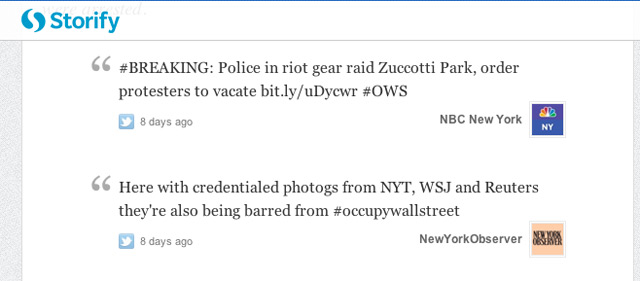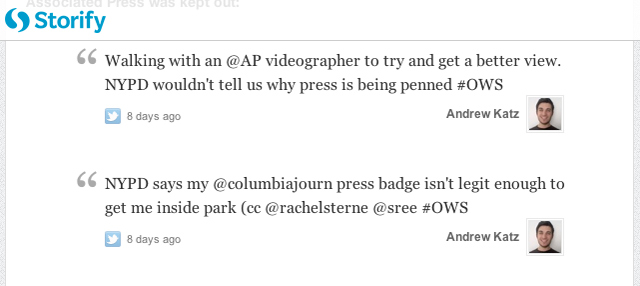Doernberg ’13 Marshals Occupy Coverage Through Social Media

At 1 a.m. on Nov. 15, the New York Police Department began clearing Manhattan’s Zuccotti Park of all Occupy Movement protestors. About 70 protesters and eight credentialed journalists were arrested that morning.
From his dorm room in Lo-Rise Residence Hall, sociology major Ben Doernberg ’13, followed the police raid through Twitter and various news sites. For eight hours, he tracked the story online.
Although he was 100 miles away from Zucotti Park, Doernberg, an active supporter of the Occupy Movement, served as a “citizen journalist” from his laptop at Wesleyan. He used the new social media site Storify to re-post incoming updates, photos and videos created by people on the scene.
His post, titled “Press Suppression at Occupy Wall Street Raid” tallied more than 22,525 reads within the week.
“Because I believe in the righteousness of the cause, I see spreading accurate information as a contribution to the movement,” says Doernberg, who participated in three general assemblies and four marches in New York City. “My Storify piece was Tweeted more than 1,000 times, meaning more than 1,000 people decided to pass along the information I collected to hundreds of thousands of people. I think it’s pretty amazing to watch that happen from your dorm room.”
The success of his Storify landed him a mention in the Nov. 15 Washington Post‘s “BlogPost” section, and the Nov. 16 Yahoo News.
Doernberg begins his Storify by posting a Tweet from NBC New York and the New York Observer:
This Tweet is followed by 22 other updates from Julie Walker of National Public Radio; Ryan Devereaux of Democracy Now; Rosie Gray of Village Voice; Associated Press Assistant Bureau Chief Chad Roedemeier; and others:
Doernberg embedded a video of of local reporter Jared Malsin being arrested, and his accompanying Tweet: “When I was arrested, I was put in a police van with NY councilman Ydanis Rodriguez and an @AFP photographer.” He also posted a “TwitPic” taken by Mother Jones reporter Josh Harkinson, and it’s accompanying caption: “Cops just violently shoved me away as I tried to [photograph] this man in a stretcher being loaded into ambulance.”
As Tweets and videos were made available, Doernberg added them, in real time, to his Storify page. He noted that journalists from Village Voice, Byline Beat, Brooklyn Ink, and The New York Observer confirmed that police were not interested in press credentials. Journalism student Andrew Katz reported:
Doernberg began Storifying after discovering multiple journalists were assaulted or arrested by police. A Tweet posted by Reuters Social Media Editor Anthony De Rosa confirmed that the NYPD had ordered a CBS News helicopter out of the air space above Zuccotti.
Several press entities, including The New York Press Club and The New York Times, have written to the city about their 1st Amendment concerns with the treatment of the press during the raid, and have formed a coalition to monitor police-press relations in the city.
“This is definitely a result of social media, in my opinion, which helped everyone connect the dots to see the bigger picture,” he says.
Doernberg, an avid Twitter user, has been using Storify since June.
“Storify is amazing because it allows you to tell a story, in real time, using only primary sources — updates, photos and videos. I’ve met and corresponded with the Storify team, and I think they’re laying the groundwork for the future of journalism.”




